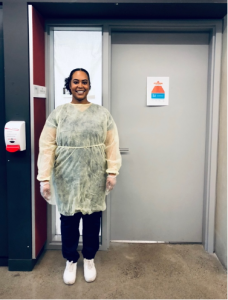Clinical Techniques to Reduce the Transmission of Healthcare-Associated Infections (HAIs)
Two types of techniques are used to prevent infection in the hospital setting. The first, medical asepsis or clean technique, has been used historically to describe measures for reducing and preventing the spread of organisms. The second, sterile technique, also known as sterile asepsis, is a strict technique to eliminate all microorganisms from an area (Potter et al., 2019).

When a client is suspected of having or is confirmed to have certain pathogens or clinical presentations, additional precautions are implemented by the healthcare worker in addition to routine practices (PIDAC, 2012). These additional precautions are based on how an infection is transmitted, such as by contact, droplet, or airborne. Additional precautions include use of personal protective equipment (PPE), such as gowns, eyewear, face shields, and masks, along with environmental controls to prevent transmission of infection.
To reduce and prevent the spread of HAIs, a system of recommended IPAC routine practices are to be used consistently with all clients at all times in all healthcare settings. The principles ofroutine practices are based on the premise that all clients are potentially infectious, even when asymptomatic, and IPAC routine practices should be used to prevent exposure to blood, body fluids, secretions, excretions, mucous membranes, non-intact skin, or soiled items (PIDAC, 2012).

